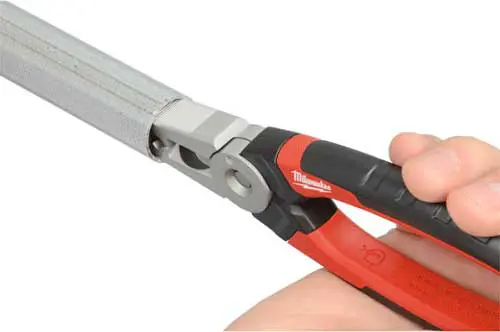
Milwaukee 6 IN 1 Long Nose Pliers 48-22-3068 Review
Having just taken a look at Milwaukee’s 6 IN 1 Combination Pliers, we weren’t too thrown off guard by the 6 IN 1 Long Nose Pliers, which are a different tool, but similar in many ways. If anything, the 6 IN 1 Long Nose Pliers feel like they are meant for things that are a bit more heavy duty. These pliers are 1/4″ thicker than the combination pliers, which is good since they can be used to pull nails. We found that the design – particularly, the head of the tool which is squared off – does a pretty decent job at pulling nails out of wood. This really is a good tool if you are an electrician and need something heavy duty in the field. I really enjoy having it in my tool pouch at work and have recommended to other electricians to go buy one as well.




